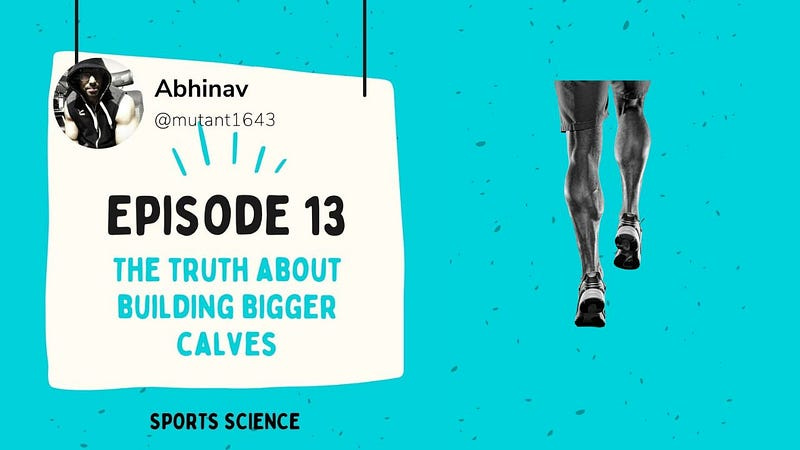Sports Training 13: The Truth About Building Bigger Calves
Muscles are fascinating structures that allow us to move our bodies in various ways. They work by contracting and relaxing, which causes…
Muscles are fascinating structures that allow us to move our bodies in various ways. They work by contracting and relaxing, which causes movement around the joints. Every muscle has two points of attachment, the origin, and the insertion point. Understanding these concepts is essential for understanding how muscles work and why some people’s calves never seem to grow bigger.
The origin of a muscle is the point where the muscle attaches to the bone which is relatively stable during the contraction of the muscle. It is usually located at the proximal end of the muscle meaning closer to the center of the body and does not move much during muscle contraction. In contrast, the insertion of a muscle is the point where the muscle attaches to the bone that moves during the contraction of the muscle. It is usually located at the distal end of the muscle meaning farther away from the center of the body and moves more during muscle contraction. The insertion is typically pulled towards the origin during muscle contraction, causing the bone to move.
Now, let’s talk about calves. Our calves have three muscles — plantaris, soleus, and gastrocnemius. The gastrocnemius is the most superficial calf muscle and originates above the knee joint. The gastrocnemius muscle gives the calf its rounded, full appearance and is responsible for the visible “pop” in the lower leg.
The difference between high and low calves refers to the placement of the muscle bulk in the lower leg. When someone has high calves, it means that their gastrocnemius muscle is less prominent and sits higher up on the leg, closer to the knee. In contrast, those with low calves have bigger gastrocnemius muscles. The appearance of high or low calves is largely determined by genetics and can vary from person to person.
The gastrocnemius muscle originates from two heads located above the knee joint, specifically from the lateral and medial condyles of the femur (thigh bone), and inserts into the calcaneus bone in the heel via the Achilles tendon. The high placement of the gastrocnemius muscle on the leg contributes to the appearance of high calves.
Unfortunately, for those who want to increase the size of their calves, the appearance of high or low calves is mostly determined by genetics and cannot be significantly altered through exercise. While exercise can strengthen and tone the muscles, it cannot change the placement of the gastrocnemius muscle or significantly increase its size.
Note: While genetics do play a role in the shape and size of our muscles, exercise can still help increase muscle mass and tone. Resistance training, such as calf raises, can target and stimulate muscle growth in the calves but not to the same extent as low calves.
People with high calves can take solace in the fact that their calves are more adept at generating power and explosiveness.
Note: The shape and size of someone’s calves may provide some advantages in certain sports, but having high calves doesn’t necessarily make someone more explosive or powerful. It is only a small part of the equation.
In future chapters, we will explore the underlying physics that explains the role of high calves in explosive sports, especially in track & field events. Ultimately, whether you have high or low calves, each has its unique strengths and advantages!
To show your support for our Free Fitness Movement, you may follow me on the following platforms:






